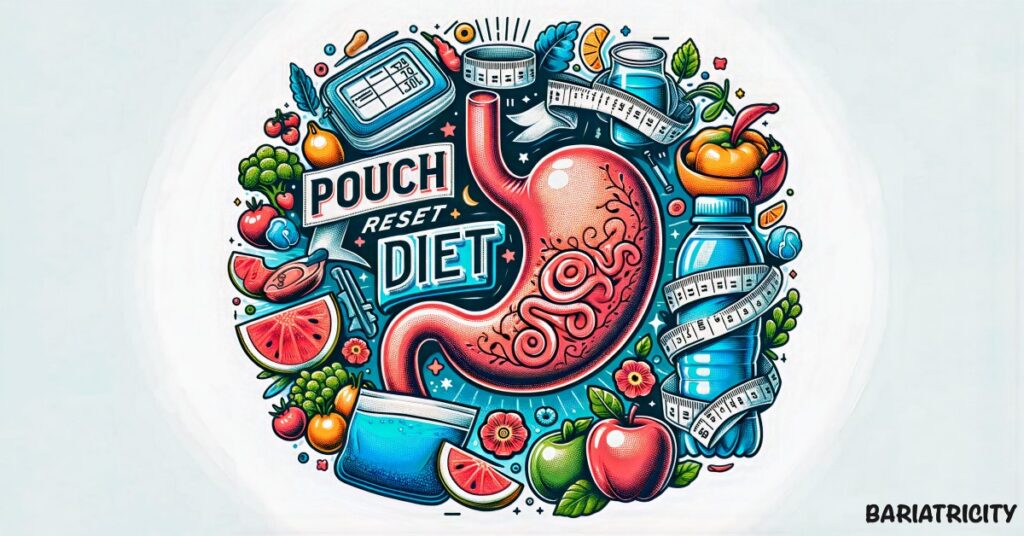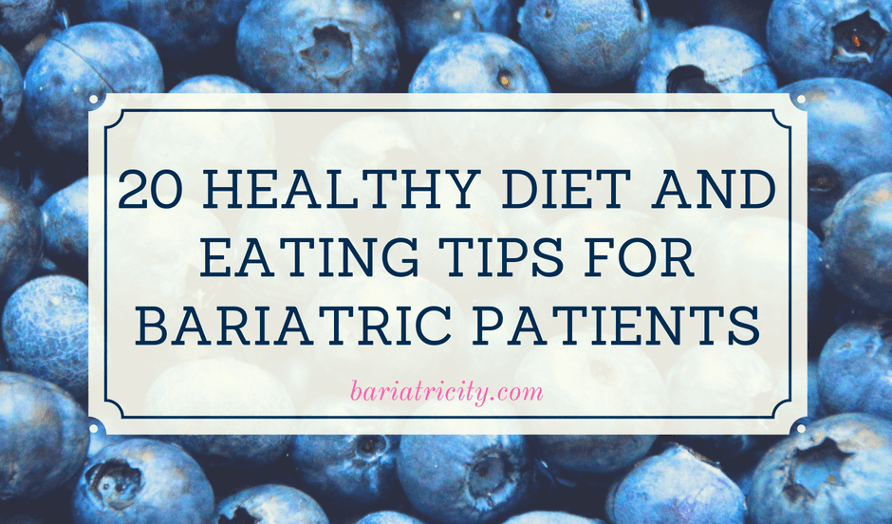After weight loss surgery, it can be difficult to know what the best post-op diet is to follow. Some bariatric programs have certified nutritionists and dieticians who can provide guidance, but not everyone has access to this support.
The post-operative diet plan is beneficial for recovery, healing, body acclimation, avoiding hair loss and nutrient deficiency, and sustaining long-term weight loss. Here, we will provide the four phases of post-op bariatric surgery diet starting from the day after your procedure and enforcing lifelong dietary habits.
This post-operative diet is intended for gastric sleeve, gastric bypass, mini gastric bypass, duodenal switch, lap band, and revision surgery. However, these guidelines should not override any instructions given by your doctor.
Phase 1: Thin Liquids
Duration: about 5 days
Usually, the first thing patients are instructed to consume after bariatric surgery is water and other thin liquids (also known as “clear” liquids).
The purpose of phase 1 of the post-op diet is to get you hydrated as quickly as possible which is important for recovery and reducing the risk of complications after surgery. A goal for thin liquids should be minimum 48 ounces.
Approved Clear Liquids: Water, herbal tea, broth, sugar-free beverages, coconut water, diluted cranberry or apple juice, popsicles, and ice chips.
During this phase, it is important to take very small sips all throughout the day. If you have difficulty with thin liquids, here are some tips:
- Take a sip the size of a teaspoon (you can use the cap of a water bottle), wait 60 seconds, then take another sip.
- Try different temperatures of liquids. Often liquids that are too cold or too warm can cause discomfort. Start with room temperature liquids.
- Try natural flavors to enhance your water: sliced berries, sliced lemon, lime, orange, cucumber, watermelon, apple, pineapple, ginger
- Keep track of your intake. The more aware you are of your intake the more likely you are to hit your intake goals.
Phase 2: Thick Liquids
Duration: about 7 days
Once patients are able to drink at least 48 ounces per day of thin liquids without difficulty they generally can move on to phase 2: thick liquids. This is when protein should be introduced to increase nutrients, as well as help with healing.
Approved Thick Liquids: Low-sugar protein shakes, blended soups, thinned creamed soups, thinned refried beans, thinned Greek yogurt, fruit and protein smoothies, thinned oatmeal mixed with protein powder, sugar-free pudding, high protein milk
Phase 3: Soft Foods
Duration: about 14 days
This is when patients can start to get a little more texture and variety in their diet. These foods should be soft enough to be able to mash with a fork.
Protein should still be the main focus of the diet but it is important to incorporate other food groups as well. This is when patients generally start to feel true restriction from their procedure.
Approved Soft Foods:
- Any cooked/refried beans, cottage cheese, ricotta cheese, string cheese, soft fruits such as berries or banana, canned fruits in juice (not syrup), avocado, mashed potato, canned chicken, tuna, or salmon mixed with mayo, Greek yogurt, egg bakes, soups with cooked veggies and chicken, cooked vegetables, braised meats, hummus, lentils.
Tips for this stage:
- Start weaning off protein shakes and liquid meals
- Serving size should be monitored/measured (typically 2-4 ounces).
- Small meals should be eaten throughout the day.
- For some people, one meal at this stage might be 2-3 bites. Only eat what feels comfortable in your body.
- Take one small bite at a time
- Try one new item at a time
- Some foods will cause nausea/discomfort and others will not. If one item does not sit well wait another week before trying it again.
- MINDFULNESS: pay attention to your body. Figure out how many ounces you can hold without feeling full, track what foods you do/don’t do well with, eat slowly, chew well.
Phase 4: Full Foods
Duration: The rest of your life
This is the final diet phase that will set the stage for your successful weight loss journey. It is important to have a variety of fresh, whole foods in your diet.
Approved Foods: Natural protein shakes, lean meats, tofu, seafood, beans, lentils, edamame, vegetables, fruits, cheeses, Greek yogurt, nuts, natural nut butter, seeds, olives, quinoa, sweet potatoes, sprouted grain bread (such as Ezekiel)
Vitamins: A healthy post-op diet alone does not provide enough vitamins to fulfill all the needs of a bariatric patient. It is extremely important to supplement your diet with high-quality bariatric vitamins to ensure deficiencies do not develop which can hinder your health as well as your weight loss.
What to Avoid: Processed foods, refined grains, high sugar desserts, soda, juice, other sugar-sweetened beverages.
*Alcohol: Alcohol should also be avoided as it is liquid calories that will not help you feel full. However, if you are to have a drink on occasion it is recommended to stick with a glass of dry red wine (best) or dry white wine.
If drinking an occasional cocktail, go with a spirit (ex. Vodka, gin, rum, whiskey, tequila) mixed with a bit of club soda, a splash of citrus, and a calorie-free sweetener such as stevia or a low-calorie drink mix such as True Lemon.
Which Post-Op Diet is Best For Me?
There is no specific post-op diet that works for everyone. We are all built differently and have different needs based on our body type, personal preferences, activity level, religious beliefs, culture, etc.
Here is a list of approved bariatric diets to try yourself!
Diets that are too restrictive or cut out whole food groups generally lead to bingeing, which leads to guilt, and eventually regain. The best chance for long-term success and weight loss is to find the right balance of fresh, whole foods that will provide your body with nutrients and energy. When you find this balance the weight will shed off and you will feel better than ever.
Resources
![Bariatric Surgery Post-Op Diet [Nutritionist Approved] 2 Bariatric Surgery Post-Op Diet Guidelines](https://bariatricity.com/wp-content/uploads/2018/07/Bariatric-Surgery-Post-Op-Diet-Guidelines-1024x576.png)

